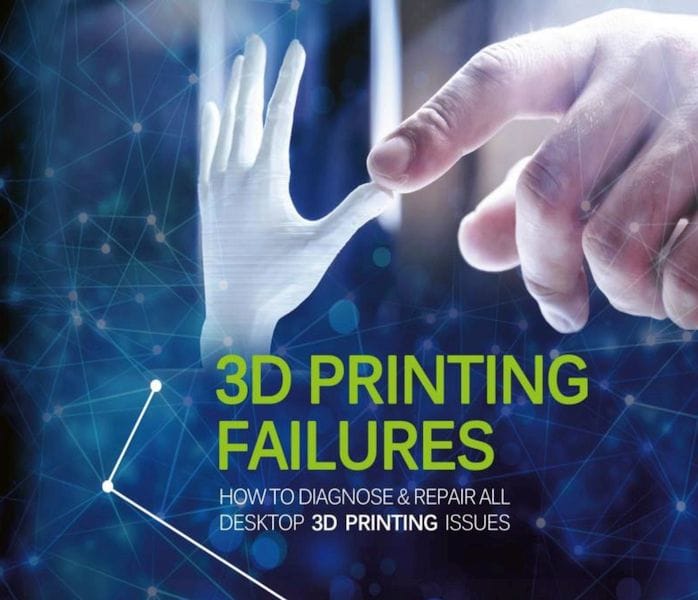
This week’s selection is the highly useful “3D Printing Failures: How to Diagnose and Repair All 3D Printing Issues” by Sean Aranda and David Feeney.
Anyone owning or operating a desktop 3D printer is very familiar with the concept of print failures. It may be surprising those accustomed to the supreme reliability of today’s 2D printers or other applications, but failure is a very frequent occurrence.
Those new to 3D printing will no doubt make all the same mistakes experienced 3D printer operators made, and through those mistakes they learn how to improve the reliability of 3D print jobs. Note that I did not say “eliminate”.
These failures occur in many different ways, and there are standard approaches to mitigate them. That’s what this book is all about. The authors proceed through a very extensive list of failure scenarios, including these:
- Bed Adhesion
- Build Plate Not Heating
- Build Plate Not Reading Correct Temperature
- Built Up Material in Nozzle
- Extruder Stepper Skipping
- Filament Snapping
- Hotend Can’t Reach or Maintain Temperature
- Hotend Not Heating
- Hotend Not Reading Correct Temperature
- Layer Shifts
- LCD Blank or Dark
- Model Errors
- Not Finding Home
- Nozzle Clogs
- Over Extrusion
- Parts Not Mating Together
- Print Pauses Mid Print
- Running Out of Filament
- Settings Issues
- Stepper Motors Overheating or Malfunctioning
- Stripped Filament
- Unlevelled Build Plate
- Warping
- Z-Axis Wobble
- Z-Height Issues
That is an extensive list, is it not? For each, the book explains what’s actually happening to cause the failure, and then presents options for you to consider that could reduce the occurrence of the issue.
What I find very useful is that the authors provide not just a “reactive” approach, where you have to make an adjustment after the fact of failure, but they also provide a number of tips on how to prepare for 3D printing properly. These good 3D printing hygiene practices are things every 3D printer operator should take on.
New 3D printer operators may be astonished by the required amount of learning to achieve more-or-less reliable 3D printing. Normally this learning occurs by trial and error, costing not only time, but also materials and in some cases risking damage to the equipment.
This book offers a way to short-circuit some of that learning, or at least speeding up the learning cycle somewhat.
Nothing compares to learning by using, but the 3D Printing Failures book can be a great aid while doing so.
Via Amazon

